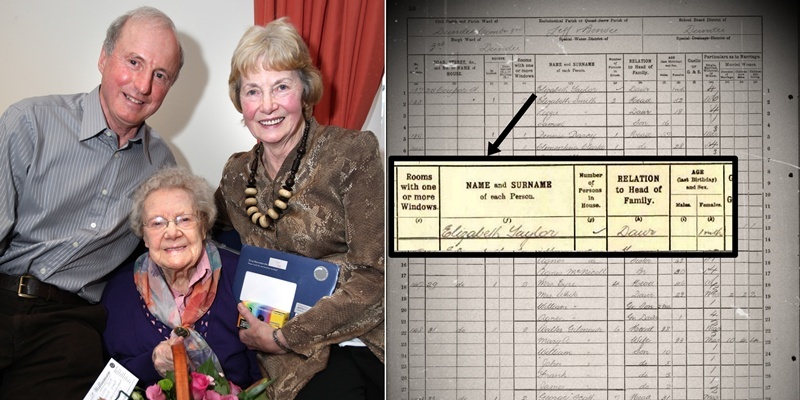A Dundee-born centenarian has had the chance to explore her family’s entry in the 1911 census, after the records were made public.
Elizabeth Scott, who celebrated her 100th birthday on February 17, now lives at Willowbank Care Home in Carnoustie.
Born at home in Lochee’s Coupar Street, just off Loons Road, Elizabeth’s surname was then Taylor and she was registered in the census as being a month old.
There were a total of five people staying in the Taylor household on the night of April 2 John (38), born in Banffshire, his wife Williamina (29), born in Buckie, and daughters Jessie (7) and Williamina (3), also born up north.
According to Mrs Scott’s daughter, Muriel McConnell, the family moved to Dundee so that John could look for work. In the census entry, his occupation is stated as “general body”.
She said, “Mum always tells me her father was a fish barrel cooper but they had to move away from their home to seek work. Perhaps he couldn’t get his skilled work in Dundee, so he took the work he could.
“She also told me he worked in a sawmill off Loons Road and was able to show me where it used to be.”
Now a great-great-grandmother, Mrs Scott was educated at Ancrum Road School before going on to work in the city’s jute mills. She married John Scott in 1936.
Following the birth of Muriel and son James, the family emigrated to Australia, returning to Scotland in 1955.
Muriel went on, “When I told mum about the census records, she started talking all about the rest of her family as more siblings were to follow after her.
“I have got a box at home with all her important belonging, such as birth and marriage certificates and her birthday card from the Queen, so the census records will be a nice addition.”
The 1911 census in Scotland was officially released by the Registrar General for Scotland on Tuesday.
The archives were opened after 100 years in line with the closure period for all personal data collected by each census during a launch in Edinburgh at the Adam Dome in the ScotlandsPeople Centre at New Register House.
Family historians, researchers and the public are now able to view high-quality colour images of their ancestors’ entries in the census via the ScotlandsPeople website and at the centre.
The 1911 census provides a snapshot of Scotland just before the first world war and, on the night of April 2, 1911, the population of the country was 4.7 million a rise of 6% since the last census a decade before. There were 2.3 million males and 2.4 million females.
Registrar General for Scotland Duncan Macniven said, “We are releasing details we have kept secret for a century, just as we are promising to do with the information collected by the 2011 census. People in 100 years will be able to read the information their ancestors have contributed to this year’s census.”
He added, “Many thousands of the young people recorded here never returned from the battlefields of Europe. For family historians, the major change is the inclusion of details of the number of children born from a marriage, which will make it easier to track children between the census years. Also, the full-colour images make it easier to decipher the enumerator’s handwriting.
“You can also see what happened to Scotland in the decade before 1911. The total population was up by 6%. However in Fife, for example, the population had gone up by 22%, while in Orkney it had gone down by 10%. A lot of that was due to the continuing industrialisation of Scotland and the drift of people from rural areas into our towns and cities.”
The top five occupations for men were in iron and other metal manufacture, agriculture, coal mining, building and commerce, such as being a clerk.
Most women were in domestic service. The next highest proportions were in textile factories, making and selling clothes and agriculture.To find out more about the 1911 census visit www.scotlandspeople.gov.ukCensus images reproduced by kind permission of the Registrar General for Scotland.
